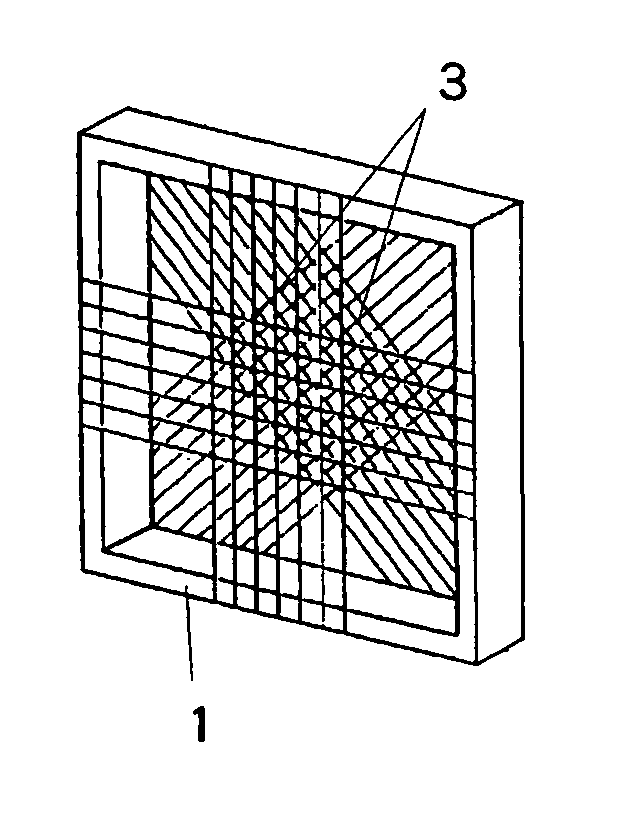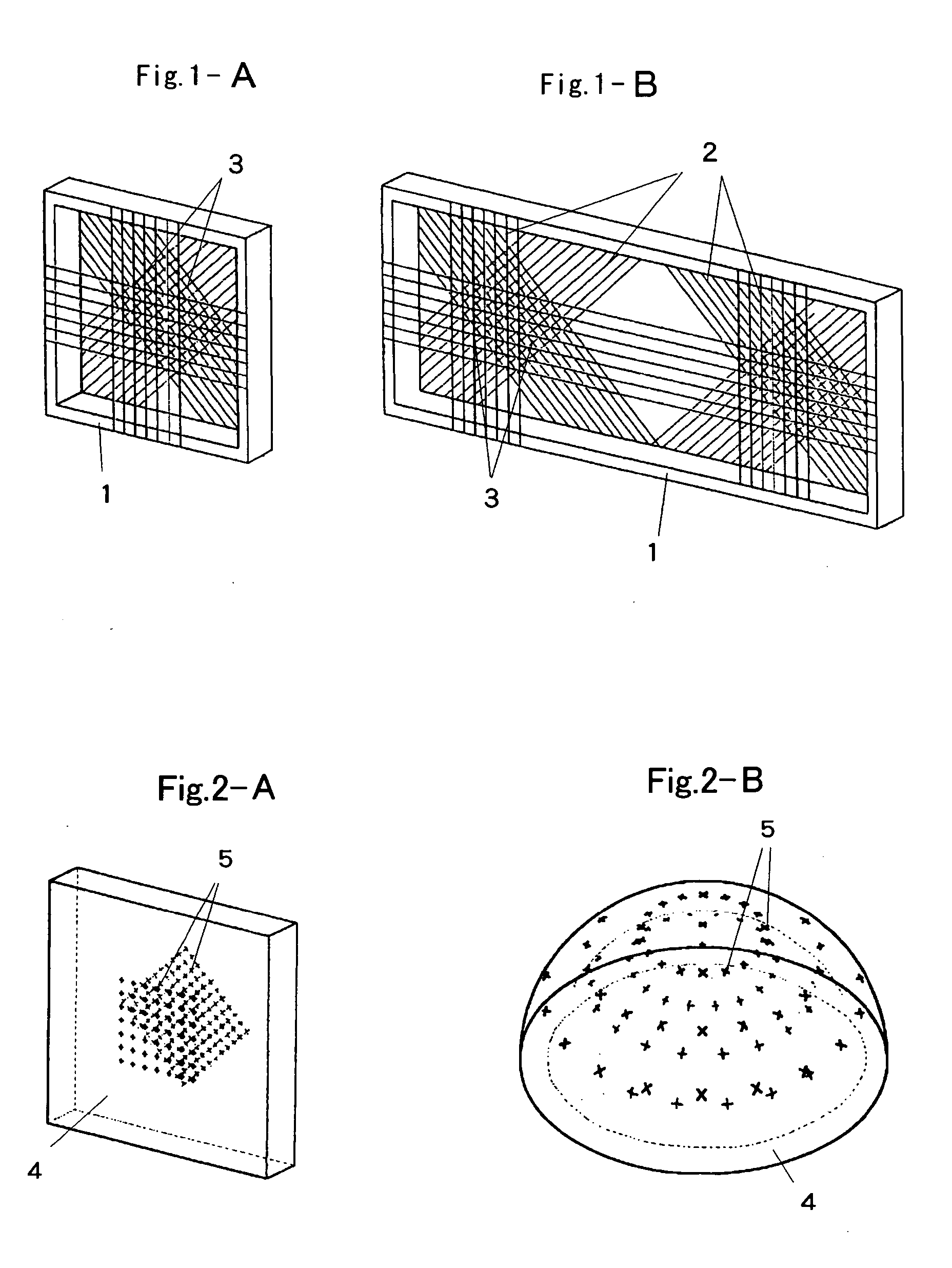Transparent camera calibration tool for camera calibration and calibration method thereof
a technology of transparent cameras and calibration tools, applied in the field of transparent camera calibration tools for camera calibration and calibration methods thereof, can solve the problems of inability to adapt to outdoor applications or the like, and the fundamental defect of errors accumulating with each successive movement, so as to achieve high-precision multi-view stereo vision, increase reliability, and simplify the time-consuming application of calibration.
- Summary
- Abstract
- Description
- Claims
- Application Information
AI Technical Summary
Benefits of technology
Problems solved by technology
Method used
Image
Examples
embodiment example 1
[0080]FIG. 8 shows an embodiment example of a stereo vision transparent camera calibration tool. A rectangular frame is created by integrating two aluminum plates with a breadth dimension 29 cm, vertical dimension of 12 cm and a thickness of 0.5 cm so same are overlapped with a distance of 2 cm between the front face and the rear face, whereupon steel wires with a diameter of 0.083 mm are fixed to one side at 3 cm intervals seven at a time by using adhesive so that the steel wires intersect each other vertically and horizontally, while the same wires are fixed to the other side at 3.54 cm intervals eleven at a time by using adhesive so that the wires are diagonally orthogonal.
embodiment example 2
[0081] Next, an embodiment of a camera calibration system that uses the transparent camera calibration tool of the present invention will be described. The simplest embodiment in terms of equipment is a case where one camera is used. As shown schematically in FIG. 9, in this embodiment, a transparent calibration tool is first installed in a position directly in front of the camera as a processing to capture as shown in the top right of FIG. 9, whereupon a close range transparent calibration tool is imaged by the camera, the image of the calibration tool shown on the center right is obtained, and the image is analyzed, whereby the parameters for the camera position and orientation are calculated and stored. A procedure is adopted in which, a short while afterwards, the camera is made to focus on an object a remote distance therefrom and photographs the object as shown in the top left to obtain an observed image of the object as shown on the center left, whereupon a three-dimensional ...
embodiment example 3
[0082] When two cameras are used, appropriate usage that involves allocating one camera especially to image for calibration acquisition and allocating the other camera especially to observed image can be used as shown schematically in FIG. 10. In this case, readjustment of the focus is unnecessary and, therefore, even in the case of scene image in which a moving body is tracked, an observed image such as that illustrated on the center left and an image of the calibration tool such as that illustrated on the center right can be obtained sequentially in parallel by the observed image camera and the image for calibration acquisition camera respectively, whereupon the images can be analyzed and calibration of the time-varying camera positions and orientation can be performed at the same time as the observed image by calculating the parameters of the camera position and orientation. However, in this embodiment, two cameras must be integrally fixed so that same do not move separately as s...
PUM
 Login to View More
Login to View More Abstract
Description
Claims
Application Information
 Login to View More
Login to View More - R&D
- Intellectual Property
- Life Sciences
- Materials
- Tech Scout
- Unparalleled Data Quality
- Higher Quality Content
- 60% Fewer Hallucinations
Browse by: Latest US Patents, China's latest patents, Technical Efficacy Thesaurus, Application Domain, Technology Topic, Popular Technical Reports.
© 2025 PatSnap. All rights reserved.Legal|Privacy policy|Modern Slavery Act Transparency Statement|Sitemap|About US| Contact US: help@patsnap.com



